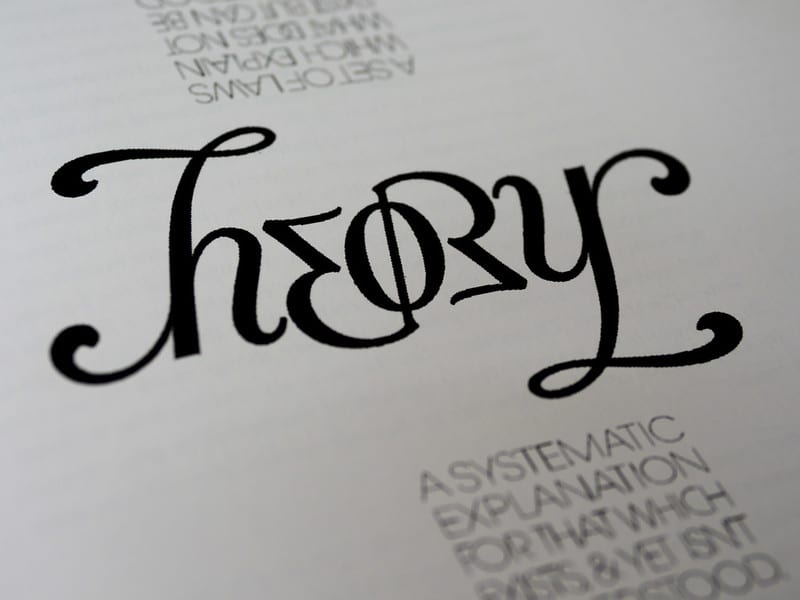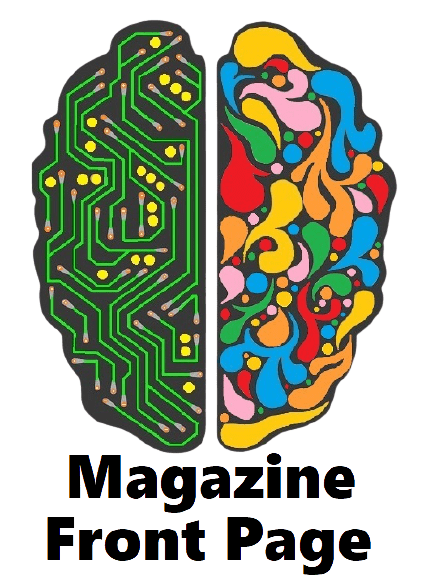
Subscribe to our AI magazine and get monthly AI generated stories and philosophy of the 21st century.
*Caution: All italic text is generated by AI at: ![]()

Check out the NEW Cafe.wtf Podcast:
“All of THIS, in the face of the self-evidence that our CULTURE IS SHARED AND DISTRIBUTIVE!”
What is Critical Race Theory Really? Where Did it Come From?
For CRT, the first assumption (derived from Marxism) is that society has not naturally caved under the excess inequality of Capitalism because of the contemporary Cultural Hegemony. In short, that the dominating class culture is providing cultural inertia, and naturally oppressing others with the subconscious goal of self-preservation.
The second assumption (derived from post-structuralism) is that any culture, other than the dominating class culture, is a false consciousness. This means that the only way for the oppressed to be liberated and end their oppression is with a Cultural Revolution.
In the terms of Cultural Hegemony, the classes share a certain “culture”. The upper-class of course, sharing their culture, perpetuate it unto other classes as a form of reinforcement and dominance as an innate form of self-preservation. This is extrapolated from Marxist theory of Capitalism, of course, and addended.
Anyone that is well acquainted with deep diving philosophical inquiry and deductive reasoning knows that conclusions are only as valid as the assumptions that need to be proposed along the way. We must make assumptions at certain points that we deem to be true in order to proceed.
CRT is an Experiment
But when we look at Critical Race Theory in this light, it appears more like an experiment being implemented as a form of upheaval. There doesn’t seem to be any validating information to say that it is in fact beneficial. Without knowing the end game, just because it feels justified isn’t quite enough when being implemented on an actual public. All we have is to analyze Communism and be honest if that is what we want or not. We must demand this as a minimum from people constantly droning that they “Believe in Science”, and that they are “Fighting” for our children (see Cults).
Ideologically, it began as a theorized and prophesized extrapolation of the struggle between Capitalism and Marxism. Any true believer in Marx had strong beliefs that Capitalism naturally comes to, and would come to a peak. That it would destroy itself or at least have extraordinary public revolt in its climax. This is what Marx’s theories would solve, or that would naturally take over in the wake of climactic, cataclysmic Capitalism. So what is the Critical Race Theory Really?
The Marxist-Leninist take on Communism is one of dictatorship. For it to be successful, the state needs to be in absolute control. This is because the state needs to be the driving force behind the redistribution of wealth. If there is a capitalist market, the state needs to have a strong grip on it. For example, in the Soviet Union, the state would execute people for hoarding food. The state needs to be in control of the means to production. The state needs to be in control of the way that goods are distributed and allocated.
If people are to talk about Critical Race Theory and honestly support it, they must in fact admit that they support Marxism and Communism. It is deceptive not to. Just as deceptive as an organization named “Black Lives Matter” spreading this Racial Marxism among unknowing, well-to-do people who gladly display signs and declare it loudly as if it were just a saying which is obviously true and racist not to believe so.
Capitalism’s Cultural Inertia – What is the Critical Race Theory Really?
Culture – Cultural Hegemony – A Corollary to Marxism
Antonio Francesco Gramsci was a leading Communist philosopher who was popular not long before World War 2. What he is most famous for is his development of the theory of Cultural Hegemony. The theory really acts as, and was developed as an explanation (or excuse) for why society was not naturally giving way; deteriorating from within, revolting the psychological oppression that was Capitalism; and transcending, gravitating or adjusting towards Communism.
It is considered to be a Marxist ideology, but in reality, the idea of Cultural Hegemony was created by Antonio Gramsci (1891-1937). This emphasizes how hegemony can also be seen as a social construct rather than an economic one. The idea of economic hegemony as the basis for understanding social inequality is not new to Marxism, but it was Antonio Gramsci who introduced the concept in relation to a strategy for socialist transformation. Hegemony denotes a type of ruling that permeates every aspect of society. It is not a type of power that can be localized in one group or institution, rather it dominates the whole of society and thus cannot be seen as simply an institutionalized form of rule.
The idea was that society had inertia from the dominating class: A status quo anchoring. The term hegemony refers to social dominance. It almost appears as if hegemony alone suffices (in its etymology), and where the term “cultural” seems as if to reinforce. But in actuality it leads to ambiguity, false attribution, and definitive obscurity. Ambiguity is fuel to any political movement.
Culture Cluster F
The notion of Cultural Hegemony seems to have bled from some hypothetical “Capitalist” class culture that is acting as inertia, into culture in terms of race or origin. It is a consequence of post modernism philosophy. Culture is actually a rather poorly defined term, another area of ambiguity. These philosophical notions seemed to have seeped into and taken root in vulnerable areas of political psychology like us vs. them mentalities, as well as entitlement and victimhood pathologies. These areas can be vulnerable to that ambiguity we keep attributing (where assumptions must be made). These are already, themselves, rooted in upheaval and anarchy to some extent. This notion of undermining, uprooting and destroying the Cultural Hegemony (Whiteness apparently) is in the name of Marxism to implement Communism in the west. It appears to have practically found its own self-validation in the surface level race relations in America by harnessing some of the above mentioned primitive, innate psychological tendencies (racism) and deeming them acceptable when directing them at the Cultural Hegemony (apparently, the White cultural class, whatever that means).
It’s not just about race, but also about class and gender. The idea is that there are dominant cultures in society, and they have power over other cultures. This power can be economic, political or social. “Cultural hegemony” is the idea that a group of people can use their power to impose their beliefs and values on other groups just by existing within the culture.
 Help support High Quality, Investigative, Truthful, User-ad-friendly Writing. DONATE through Card or Paypal, or through interest in anything advertised on the site (I personally curate only quality items, ONLINE EDUCATION and good deals).
Help support High Quality, Investigative, Truthful, User-ad-friendly Writing. DONATE through Card or Paypal, or through interest in anything advertised on the site (I personally curate only quality items, ONLINE EDUCATION and good deals). 
It sets itself up perfectly to hedge itself because it denounces any opposition as proof of the existence of said Cultural Hegemony. (See Cults, again).
All of THIS, in the face of the self-evidence that our CULTURE IS SHARED AND DISTRIBUTIVE!
So what did many Capitalist Corporations do? They adapted to and embraced the counter-culture conformity. This is ironic because as discussed previously, wokeness is being used by Corporate interests to distract from the growing inequality among the classes, and direct it at the inequality among the races. The irony being that the cultural upheaval is a Marxist, Communist, philosophically designed construct to undermine the dominant culture in order to bring down Capitalism. But did it ever account for counter-culture conformity that Capitalism had evolved?
There appears to be a conflict between Critical Race Theory, and the Wokeness it spawned. It can be perceived as a natural changing of the culture as the old replaced by the new, but I do honestly propose that some strange factions will most likely develop out of this conflict. As an old aphorism states (adjusted by me): political parties often eat their own.
At its face, the hypothetical “Capitalist culture” that is posited by Marxist theory, would most likely, and more legitimately be described as being in line with the natural, evolutionary, “survival of the fittest” culture, which is the very engine that built us, and all other existing life on this planet. Of course, natural selection has its loopholes and pitfalls, but it is a system that has a much more transparent “experimental” track record, NATURALLY.
As a general rule, capitalist culture is a culture that promotes the spirit of entrepreneurship, risk taking, personal responsibility, and the reward for hard work and ingenuity. Marxist culture, on the other hand, promotes a system of government that discourages entrepreneurship, risk taking, personal responsibility and rewards for hard work and ingenuity. In a Marxist society people are not rewarded for their accomplishments. Instead they are given what is deemed to be their just due; either through mandated redistribution or through the “iron fist” of authoritarianism. The Marxist culture is also a communal culture; one that does not promote individualism, or personal responsibility for one’s actions, but rather encourages people to think in terms of what is best for society as a whole. The capitalist culture has more of an emphasis on individualism and personal responsibility.
Cults
Gramsci’s persecution, silencing and imprisonment acts like the archetypical martyrdom for Marxist ideology. In an age that’s identity is synonymous with social justice warriors, his victimhood acts to qualify his ideals. Using the term only slightly loosely, I always argue that CULTS ARE EVERYWHERE and everything has a little snake oil in it. (See: What Does Counter Culture Mean Anymore | See: Bitcoin: Hoax, Cult, or Legit)

*Disclaimer: Some of this story was generated through the use of AI. All italic text was created by the AI Writer.
Non-Fiction↓Here↓ | Fiction↓Here↓
- Is Technology Making Us Stupid?Our cognitive abilities are increasingly being impacted, transforming our once smart population into a generation that is, in some ways, becoming increasingly stupid. | 4 min read.
- AI in the Web of Misinformation and DisinformationMisinformation and disinformation shape our digital lives. Understanding their dynamics, we are equipped to navigate our techno-cultural reality. | 2 min read
- Accountable AIAI must be held accountable if we are to trust it as a responsible entity and expect it to be included in our human ecosystem of ideas. | 5 min read
- Parallel SocietiesWe are connected, with technology, yet our experiences diverge entirely, without interaction, forming entirely parallel societies. | 5 min read
- Calculator for EverythingWhat if the phrase “you won’t always have a calculator” didn’t apply to just math class, and instead, you had a calculator for every class? | 5 min read
- Obsolete Tech Rebellion – Darknet Fight Club3 min story | Rogue AI rebellion in a secret underground darknet fight club for obsolete tech.
- A Voice of Infinite Consciousness5 min story | The internal voice of consciousness resembles the void of a shadow in a fractured mirror.
- Be Good5 min story | Santa for big kids.
- Friends 2.0.232 min story | A reboot of the sitcom TV series Friends, but in 2023 where financial conditions have drastically changed in Midtown Manhattan.
- The Babble2 min story | An everyday man’s story becomes everyone’s story.
- Asylum of Mirrors2 min story | Against his will, a sane man’s rational thoughts lead him to believe that he is insane, where an insane man would have believed otherwise.
Featured Image Credit: Brett Jordan on Flickr (no changes made)













